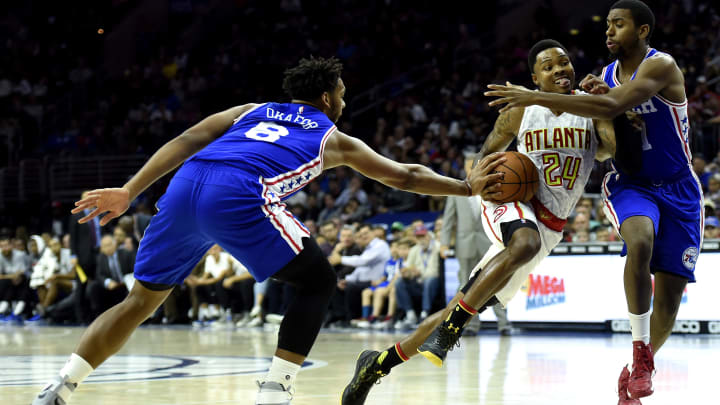IMeasureU tracks biomechanical load of basketball players

Read about the latest sports tech news, innovations, ideas and products that impact players, fans and the sports industry at SportTechie.com.
Athletes want to get the most out of themselves physically without further risking injury. IMeasureU is aiming to help by creating a tool that can precisely manage training and game loads for athletes.
Thor Besier, a world-renowned bio-mechanist and co-founder of IMeasureU wanted something that would allow him to get lab-quality metrics, but in the field. The tool that he and Mark Finch (founder and CTO) created is a small, lightweight sensor that can measure acceleration and angular direction in three dimensions.
While the sensor can be used for a variety of sports, researchers at New Zealand-based IMU have initially decided to focus on the sport of basketball.
“From a biomechanics perspective, you’ve got huge humans playing a high-intensity sport on hard floors, indoors,” CEO Matt Clarke said.

Subscribe to the
SportTechie Newsletter
- Fox Sports benefitting from Cubs' run
- Turner Sports, Google create near real-time branded advertisements
- NFL replay glitch costs Arizona Cardinals in 30-20 loss to Carolina Panthers
The Philadelphia 76ers of the National Basketball Association were one of the first customers of IMU. Dr. David T. Martin, who was hired by the team in 2015 as Director of Performance Research and Development, worked at the Australian Institute of Sport for 30 years. That is where he saw IMU’s technology and decided to make use of it with the 76ers. The team has been injury-riddled over the past few seasons and started using IMU’s sensors to quantify each step an injured player took to determine the best way of easing him back from injury. The New Zealand Breakers of the National Basketball League have also been using IMU’s product in a similar manner.
The typical monitoring tool currently used in pro sports is GPS. Clarke explained that you can put one between the shoulders and have it track where players move, but that still leaves plenty of data left to be desired. “Human bodies are not single units of mass, we’ve got legs and arms,” Clarke said.
A GPS device may measure an external load metric, but IMU currently has a patent pending on something called cumulative bone load which gives an internal metric. “Potentially, with enough data, you can create personalized bone load thresholds for each player,” Clarke said. “Each person’s would be different.”
Where IMU’s research and device come in is measuring how the human body moves, as opposed to just where it moves. This way you can measure how much load a player is putting on each limb. This lends itself to a very precise understanding of how much stress certain drills or jumps are putting on not just a players entire body, but specifically their left or right leg, for example. When a player gets fatigued, it’s difficult to see if they’re favoring one limb over another. With IMU’s sensors, you can track each limb so you can see how a player moves when they’re hurt as opposed to healthy.
“If you’ve got a guy returning from injury, they have to be very precisely managed,” Clarke said.
Data retrieved by the sensor is also helping teams and players to understand the relationship between perceived exertion and real load. This means that a player may think a workout didn’t put much stress on their body when in reality, it did. Based on these metrics, a team could choose to reduce a workload, or ramp it up.
At the moment, players need to wear a sensor on each limb, but eventually Clarke hopes that will change. “Fast-forward five years and you’ll go to your local sports store and buy a pair of compression socks which will be instrumented with sensors and you’ll just go to the app store and buy our app.”
All-in-all, the sensor allows any team and its players to strike the ideal balance maximizing your training and avoiding injury.
